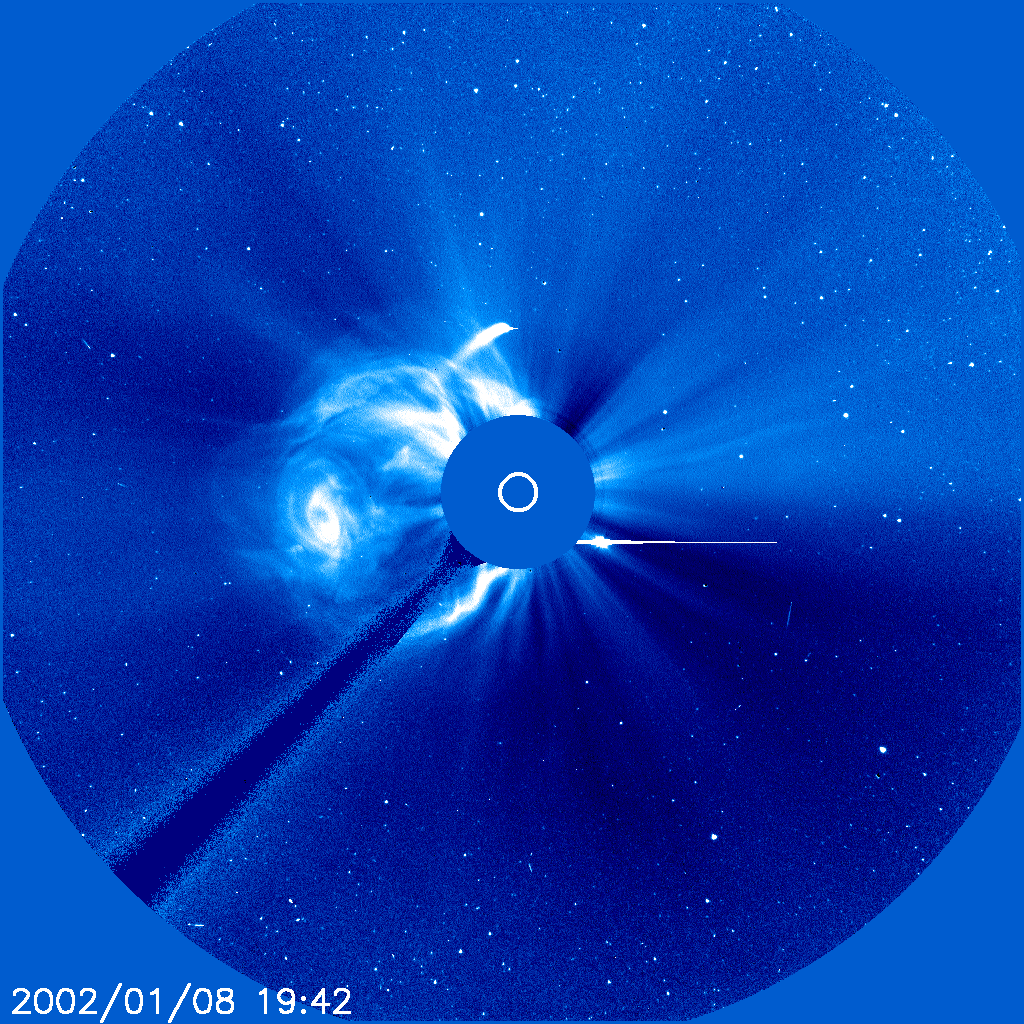A Comet Favorite Whips by the Sun This Week as Scientists Watch
Fans of the long-running Solar and Heliospheric Observatory have a special treat this week: A long-time cometary favorite of the SOHO spacecraft team will make a grand return to the spacecraft's images as it swings around the sun.
The comet, called 96P/Machholz, will start its fifth run through the spacecraft's field of view since SOHO launched in 1995. Its previous visits were in 1996, 2002, 2007 and 2012. This time around, it should enter the lower-right-hand corner of the imagery on Oct. 25 and then move along the right-hand edge of the field of view through Oct. 30. [Amazing Comet Photos from Earth and Space]
"96P is a fascinating comet," SOHO researchers said in a statement, calling 96P one of the team's favorites. "Amateur astronomer Don Machholz discovered the comet in 1986, and it was soon revealed to be short-period, meaning its orbit around the sun is less than 200 years. Comet 96P completes an orbit every 5.24 years, and has its closest approach to the sun at a rather toasty 0.12 AU (18 million kilometers or 11 million miles) [from the sun]. That's very close for a comet, and that alone makes it interesting."
But there's more to 96P than just its close approach to the sun. According to the statement, astronomers know about the comet's lineage. It's likely related to two families of comets — the Marsdens and the Krachts — and a parent of three meteor showers: the Arietids, the Southern Delta Aquarids and the Quadrantids.

With the comet running so often through astronomers' view, scientists have learned a bit about its history and evolution. In 2012, SOHO observations revealed two fragments had broken off the comet and were positioned a little ahead of the main nucleus – indicating the comet is still changing. In 2002, 96P happened to fly by as the sun produced a coronal mass ejection of particles. The two events were not linked in any way, but they produced some spectacular images.
A 2008 study in The Astronomical Journal pointed out that the comet has "extremely anomalous molecular abundances." SOHO's team said: "This basically means it has a really weird composition when compared to all the other comets we know about."
Between Oct. 26 and 28, 96P will also be visible through the NASA STEREO-A (Solar and Terrestrial Relations Observatory Ahead) satellite, which is nearly on the opposite side of the sun to Earth. So this pass will be the first time that 96P is visible from two locations in space at the same time.
Get the Space.com Newsletter
Breaking space news, the latest updates on rocket launches, skywatching events and more!
A joint project by NASA and the European Space Agency, SOHO's primary mission is to observe the sun, but it turns out the coronagraph it uses (to block the sun's light) is also ideal to catch sungrazing comets. In 22 years in space, the spacecraft has caught more than 3,000 comets on camera.
Follow us @Spacedotcom, Facebook and Google+. Original article on Space.com.
Join our Space Forums to keep talking space on the latest missions, night sky and more! And if you have a news tip, correction or comment, let us know at: community@space.com.

Elizabeth Howell (she/her), Ph.D., was a staff writer in the spaceflight channel between 2022 and 2024 specializing in Canadian space news. She was contributing writer for Space.com for 10 years from 2012 to 2024. Elizabeth's reporting includes multiple exclusives with the White House, leading world coverage about a lost-and-found space tomato on the International Space Station, witnessing five human spaceflight launches on two continents, flying parabolic, working inside a spacesuit, and participating in a simulated Mars mission. Her latest book, "Why Am I Taller?" (ECW Press, 2022) is co-written with astronaut Dave Williams.









